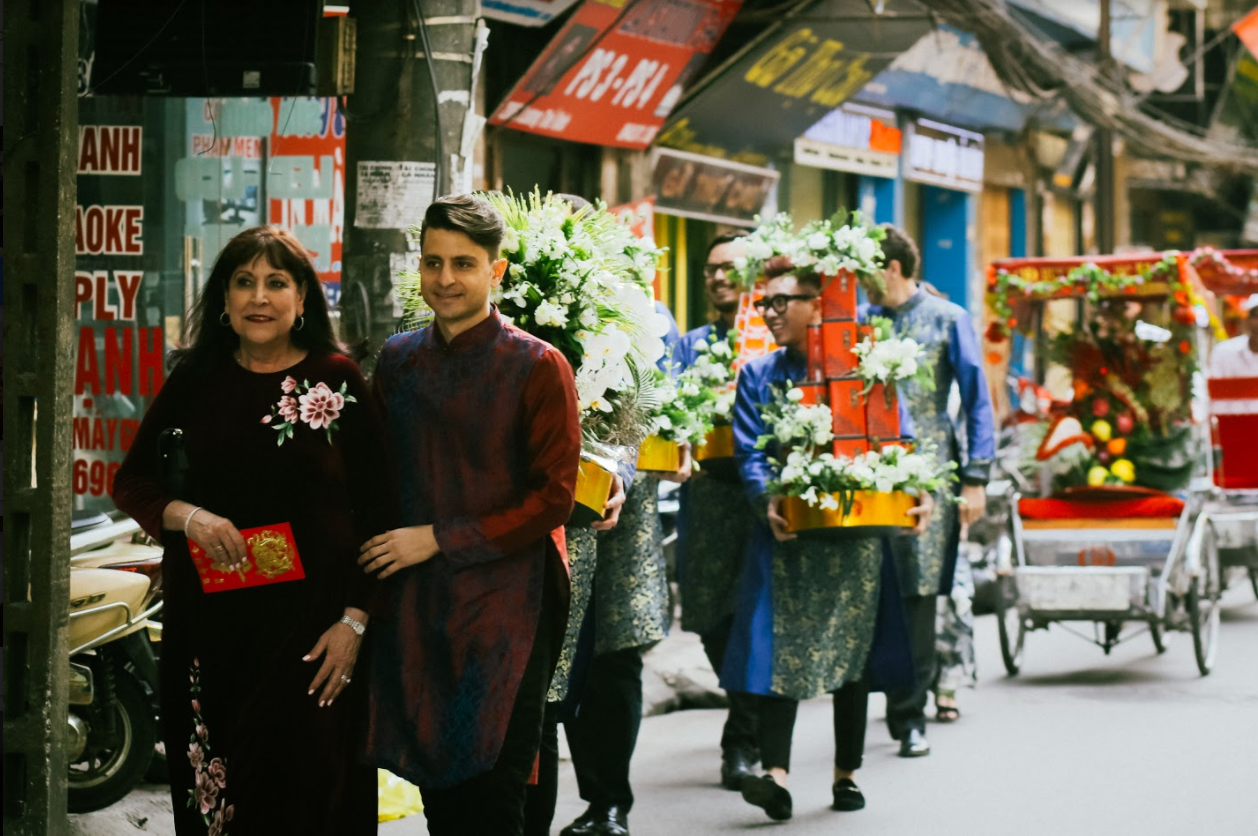By: Meegan Rehak, Work and Travel Senior Employer Services Coordinator
This spring, I had the pleasure of attending an engagement ceremony in Hanoi, Vietnam. It was very different from a traditional American engagement, where the man gets down on one knee with a ring and proposes marriage. The engagement ceremony I witnessed occurred between Justin and Hien. Hien is Vietnamese, and Justin is American.
Here is how the Vietnamese engagement ceremony works:
The couple discusses getting engaged and decides upon a day to have the engagement ceremony. Often, the couple will seek advice from their elders or a psychic to choose the best possible day for the ceremony. The ceremony begins with the groom and his friends gathering gifts to offer to the bride’s family so that her family will accept him. These gifts typically include teas, sweets, fruits, vegetables, alcohol, and even money. Each of the groom’s friends will carry a gift and bring it to the bride’s home. Traditionally, they arrive at the bride’s home by riding a cyclo, which is essentially a bike with a chair on the front. When the men arrive to the house, they are greeted by the bride’s family and invited into the home. The house is ornamented with flowers and decorations to celebrate the occasion. Both men and women dress in “ao dai,” which is a traditional Vietnamese outfit.
The bride’s family and friends then ask the groom three questions before he is permitted to see the bride and marry her. If the groom gets any of the questions wrong, he has to eat something that he does not like. For example in the ceremony that I witnessed, Justin does not like pickles so that was the food chosen. The questions that are asked vary from family to family. After the questions are asked and the groom answers, the bride enters the home and everyone enjoys tea and snacks.
Next, there photographs of the couple, families, and friends are taken! Finally, both families engage in another ceremony where both families make offerings and praise each other in line with their Buddhist beliefs. These offerings include fruits, candles, flowers, and incense. After the prayers, both families celebrate by eating lunch! The lunch also has some unique traditions. For example, at the ceremony I attended, the older generation was separated by gender, while the younger generation all sat together.
I loved experiencing this unique event and a new cultural experience. It was an amazing ceremony that I will never forget!
